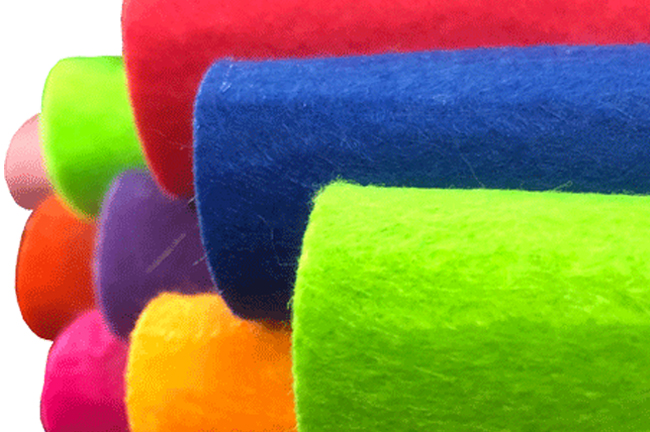Felt comes in a variety of shapes, sizes and qualities, this is a guide to choosing the right felt for your project as well as some handling tips. Felt is a non-woven, non-knitted fabric made from needle-punched or knotted pieces of fibre that become entangled when heated.
Real felts can be made from a variety of fibres including wool, fur, mohair, cotton, rayon/viscose fibres or other synthetic fibres. Felt is achieved by impacting the fibres, compressing them, shrinking them and then felting them by applying moisture, changing the temperature, applying pressure and then abrading the roughly processed fibres.
Felt is a textile made from wool, which is made by wetting and compressing its fibres. This soft, tactile and renewable material is a great alternative to less sustainable textiles and plastics.

Felt is a material that requires neither weaving techniques nor complex weaving techniques. History: Felt is probably the oldest fabric known to man. It predates weaving and knitting. As felt is not woven, production does not require looms, so it was easy for ancient people to do.
Polyester felts are synthetic needle felts made from polyester fibres. The polyester fibres are felted with special felting needles that have small barbs at the end. These barbs pull the polyester into itself and lock it together to form the fabric.
Polyester felts are available in a variety of densities and thicknesses to suit your needs. It offers a low-cost alternative to wool for many industrial and commercial applications. JIAMING WOOL produces needle felted polyester felts to meet your requirements. To learn more about our polyester felt products, please contact us today.
Much depends on the type of felt, most felts available from retail outlets are acrylic or wool felts.
Acrylic felt or glitter felt is perfect for craft projects such as decorations, Christmas decorations, appliques.
This type of felt will not take much roughness and tumbling, so if you are making stuffed animals or other projects that require a lot of handling, it is best to look for wool felt.
Wool felts usually contain 20-35% wool, and there are sturdier craft projects where wool felts can be made into beautiful bags, hats and used in garments such as collars and cuffs.
Felt does not come apart, so there is no need to finish the seams
Felt is very stable and easy to sew
Whatever you do, don't dry-clean the felt! It may warp in the process
Felt can blister and pill as it tends to wear out
Under pressure, felt can tear and cannot be easily repaired
Be careful with felt in garments - it does not recover well when stretched and will stick out at the elbows, knees and bottom!
Steam may damage the felt
Let the felt pass naturally through your machine
Do not dry clean!
Press with little or no moisture. Use a pressing cloth.
Wash hands in cool water with mild soap, rinse and squeeze out excess water. Do not twist or distort the feel to avoid distortion. Hang to dry.
Cut the felt with a rotary cutter for greater precision. Felt can also be cut with scissors, but do not use your best fabric scissors
Felt fabrics, such as boiled wool, cotton or wool have no real feel.
Real felt is made from virgin fibres, in this case, felted fabrics which are shrunk and filled to produce a felt-like fabric.
Felt fabrics are less dense, more durable, drape better and are better suited to garment making projects than real felts.
Previous: None
Next: What Is Felt Used for?